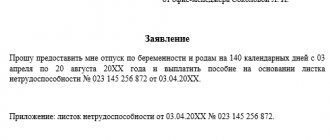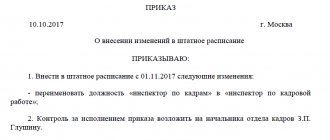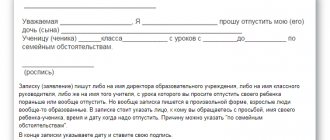Actions of the employer upon receipt of a subpoena
If it was not possible to reach an agreement with the employee, and the claim has already been filed, then the most reasonable decision of the employer would be to contact a lawyer. You should not take any action without receiving advice.
The main task of the company is to collect evidence that the employee is acting with the goal of obtaining material compensation from the company. To resolve the dispute, the court will look into the circumstances of the dismissal. The judge will be interested in the reason for dismissal (violation of labor discipline, statement of one’s own free will, etc.) and whether there were any violations of the law during the process of terminating the employment contract.
Attached documents
Attention! Such documents may include official papers that prove the validity of the stated claim:
- The order of acceptance to work,
- employment contract,
- regulations on remuneration at the enterprise,
- collective agreement,
- order of dismissal, if a dispute has reached this point,
- materials of internal investigations, if any,
- instructions from the labor inspectorate,
- statement of receipts on a salary card,
- monthly payslips,
- other documents that may be relevant to the dispute.
All attached documents are attached in copies. However, you should have the originals with you, as the court is obliged to verify their identity.
Complaint to the labor inspectorate about non-payment of wages.
A lawsuit - what an employee can demand
If the dismissal is considered illegal, the employee has the right to demand from the employer:
- reinstatement in the same position;
- changes to the entry in the order - instead of dismissal under the article, write down that the dismissal was made at the employee’s own request;
- payment of lost earnings during forced absence (Article 234 and Article 394 of the Labor Code of the Russian Federation);
- compensation for moral damage (Article 237 of the Labor Code of the Russian Federation);
- reimbursement of costs associated with the consideration of the case (Article 98 of the Labor Code of the Russian Federation).
Incurring such expenses is a dubious pleasure, especially if there were no violations on the part of the company (employer). Therefore, it is necessary to develop a strategy for protecting your interests in court.
Dismissal at your own request
If an employee quits by submitting an application of his own free will, then the employer does not expect any trouble. But no one is stopping the former employee from filing a lawsuit, explaining that he wrote the statement under pressure from management, or did not write anything at all, and in fact it is a fake. If the court sides with the plaintiff, the company will not only have to reinstate the employee to his previous position, but also pay compensation. Therefore, people who are not very clean are trying to “get even” with the company and make a profit.
The statement was written under pressure
If a former employee states that he wrote his resignation letter under pressure, then the employer is not obliged to prove his innocence. According to the RF Supreme Court Resolution No. 2 dated March 17, 2004, the employee’s statement about being forced to write “of his own free will” needs to be verified. The employee must prove the existence of coercion.
An employer can protect itself from groundless accusations that an employee was forced to write a statement. To do this, he needs to try to record all conversations with the employee about dismissal on a voice recorder. Nowadays, almost all mobile phones are equipped with a voice recorder, so you don’t have to buy additional equipment. The presence of such a record will not allow the former employee to claim that he was forced to write a statement.
The second option is to resume the conversation about dismissal in front of witnesses who can then confirm that there was no pressure on the employee.
If there were violations on the part of the employer, then he does not need to prove his innocence. This is the responsibility of the employee (point “a” of the RF Armed Forces Regulation No. 2). If he cannot provide evidence, only the employee's own statements and testimony will not be enough. Evidence must be provided in writing - it takes precedence over oral statements.
In court, a company representative may ask the plaintiff what exactly the pressure was. If he says that he was threatened, then you should inquire about the nature of the threats. The court will take into account if these were threats to the life and health of the plaintiff himself or his relatives. Threats to fire an employee under the article are not recognized by the court as a convincing argument.
The signature on the application is invalid
Another typical situation is when a dismissed employee claims that the application was not signed by him. Dismissal at one's own request is made only if there is a personally signed application. Verbal communications or a statement written and signed by someone at the employee's request are not a defense and the employer will lose in court.
To avoid violations, insist that the employee write the application in his own hand. It's better if he does it in front of witnesses. Then the employee who claims that the application was not written by him will have no arguments.
It should be insisted that the employee write all the text of the document by hand. If it is printed and there is only a signature, then it will be difficult to prove its authenticity. If the application is written by hand, you can insist on a handwriting examination.
Nuances when drawing up an application
Article 80 of the Labor Code states that a resigning employee must notify the employer of termination of the employment agreement at least 2 weeks in advance. The period of two-week “working off” begins to count from the next day from the date stamped on the application.
Difficulties may arise if the employee indicates in the application before the expiration of the notice period. If the statement contains the preposition “from” before the date (like “from 04/01/2020”), it will be difficult to determine which day should be the last working day. This may be the day indicated in the document or the previous one.
One small excuse can play a cruel joke on an employer. If a former employee decides to go to court to declare the dismissal illegal, then he will have a real chance of success. In this case, the dishonest employee may demand payment for forced absence. And considering that legal proceedings are a lengthy matter, they can last six months or more, the amount will be quite large.
Therefore, it is better to immediately recommend that employees who want to write an application draw up the document strictly according to the proposed template. As a last resort, you need to carefully monitor how the dates are entered.
If such a violation was committed, then the company has little chance to defend its case. It is useless to try to prove to the court that the employee deliberately confused the documents. It is not advisable to take any other actions, including writing letters to the employee asking for clarification of an unclear point. The employee will simply state that he did not receive anything, and it will be impossible to refute this.
Withdrawal of application
In Art. 80 of the Labor Code states that before the expiration of the notice period, an employee who has submitted a letter of resignation has the right to withdraw it. There will be no dismissal.
Difficulties arise because there is no clearly established form for withdrawing an application. An employee may argue in court that he sent a notice to the employer by registered mail without an inventory. And the fact that this letter did not arrive is not the employee’s fault. To do this, it is enough for the former employee to present a copy of the application for recall and the shipping receipt.
If an employee decides to “punish” the company, then he can enclose a blank sheet or an advertising booklet in his registered letter. But he will have all the documents necessary to present in court.
To be on the safe side, you need to clearly record all mail you receive. If a registered letter arrives with incomprehensible content, the employee must write a report dated the date the correspondence was received. Substantial proof of his rightness is materials from surveillance cameras located in the office, which recorded the moment the letter was opened.
At the trial, the main emphasis should be placed on the fact that no inventory was drawn up for the attachment in the registered letter. The presence of a payment receipt does not prove that an application for revocation was sent. The presence of witnesses on the part of the plaintiff who can confirm that he sent exactly the application, and not an empty sheet of paper, can be disputed. Strangers who are at the post office at this moment are unlikely to look so closely at what exactly the other client is putting in the envelope. And if these witnesses are acquaintances of the plaintiff, then their testimony is worthless, since they are interested parties and could enter into a conspiracy.
If an employee claims that he sent the review by fax or email, then carefully check the contents of the box and the place where received faxes are placed. This search must be carried out in the presence of the arguer and with the voice recorder turned on. It is necessary that the recording include the words of the employee confirming that the search was carried out. The disputant should be asked to write an explanatory note, which would describe in detail where, when and under what circumstances the application for revocation was written. This will help to understand whether there were witnesses and surveillance cameras at that moment.
There is a possibility that the employee will prove in court that the withdrawal of the resignation letter was made orally. If there were no witnesses at that moment, then the company has a real chance of winning the case.
You can play on the fact that the review should come personally from the employee who wrote the application. That is, a review received by fax cannot serve as real evidence; it could have been sent by anyone, and not by the disputant himself personally. Based on the received fax, you can determine the time and place of sending, but the identity of the sender cannot be determined. The employee will have to look for two disinterested witnesses who could confirm the sending of the document, or present recordings from CCTV cameras, if any.
Rules for drawing up an application
Economic problems periodically bring to the surface issues related to delays or non-payment of wages. Naturally, the employee, not wanting to quarrel with his employer, tries to ensure that the money he earns is paid to him.
However, if persuasion and persuasion do not bring any benefit, a person is forced to seek legal protection. The completed statement of claim is submitted to the district court according to the territorial location of the employer.
Typically, the legal address coincides with the actual location of the central office of an enterprise, organization or institution.
Attention! At the same time, the employer’s structures may be located in several places, geographically distant from each other, and in some cases, in other populated areas. In this case, the claim should still be filed at the location of the main office.
When drawing up a statement of claim, you should adhere to the rules established by Article 131 of the Civil Procedure Code of the Russian Federation.
This rule contains an exhaustive list of issues that must be reflected in the statement of claim. If you ignore this requirement, the claim will be returned without consideration.
Introductory part
Remember! In order for the court to accept documents for consideration, the following information must be indicated in the introductory part of the statement of claim:
- the full name of the judicial authority in whose name the document was drawn up, its address indicating the postal code, name of the locality, street and house number;
- information about the plaintiff, which should include the last name, first name, patronymic, address of his place of residence, means of communication in the form of a telephone number or email address;
- information about the defendant, consisting of the full name of the legal entity or individual entrepreneur, INN and KPP, by which this person can be identified. Legal and actual address of the location indicating the postal code, name of the locality, street, house, building, and so on. Communication means in the form of telephone, fax, email address;
- the cost of the claim, that is, the exact amount of back wages that should be recovered from the employer.
The document itself must contain the following text: “Statement of Claim.” It is located in the middle of the sheet. Below, also in the middle, there is a clarification of what the plaintiff is going to court with: “for the recovery of wages.”
Attention! Our qualified lawyers will assist you free of charge and around the clock on any issues. Find out more here.
Descriptive part
The descriptive part of the statement of claim is intended to set out the factual circumstances that served as the basis for seeking judicial protection.
Remember! Information should be presented briefly, clearly, legally competently, adhering to the order of occurrence of circumstances:
- when the employment relationship between the parties began;
- on what terms the employment contract was concluded;
- what work was entrusted to the plaintiff, or what functional duties he performs;
- in what order and in what amount should labor be paid according to the employment contract;
- how the employer actually paid the employee;
- what are the violations on the part of the employer;
- what labor legislation norms have been violated;
- what measures the employee took to resolve the controversial situation;
- what was the reaction from the employer;
- how much the employer owes and for how long.
What can you do to win a dispute with a fired employee?

If the dismissed employee filed a lawsuit, but the employer’s position is not strong enough, then the process will need to focus on the procedural subtleties of the proceedings.
Statute of limitations
The easiest way to challenge a claim is to violate the statute of limitations. Article 392 of the Labor Code of the Russian Federation states that an employee can file disputes regarding dismissal within 1 month. The period begins to count from the day:
- delivery of a copy of the dismissal order;
- issuing a work book;
- providing information about his employment in accordance with Art. 66.1 TK.
If it is impossible for the employee to be given a copy of the order and work record book, then the deadline for applying depends on whether a notice of the need to receive the document was sent. If such notice was not sent, then the deadline for going to court may be shifted to the time when the former employee actually received the documents.
Reinstatement of missed limitation periods is possible only for good reasons:
- illness of the plaintiff himself;
- the need to care for a seriously ill family member of the plaintiff;
- business trip;
- other force majeure circumstances that prevented the filing of a claim on time.
If a dismissed employee missed deadlines and could not prove the existence of valid reasons for the absence, then this is a sufficient basis for refusing to satisfy the claim.
However, the court cannot automatically dismiss a claim due to missed filing deadlines. The issue of late filing will be resolved during the court hearing, but only if the defendant declares this. If it is established that the deadlines were not met, the court decides to reject the employee’s claim (Part 6 of Article 152 of the Civil Code of the Russian Federation).
The defendant (employer) may file a motion to skip the deadline before the start of the debate at any time. It is better to file such a petition in preparation for the trial, then the decision to reject the claim can be made during the preliminary hearing. The advantage of this option is that the decision to refuse the claim is made without taking into account other circumstances (Part 6 of Article 152 of the Code of Civil Procedure of the Russian Federation).
If you file a motion to skip the deadline after the deadline for the main hearing has been set, then a refusal will also be issued. But in this case, the court examines all the circumstances and nuances of the dispute that has arisen. And if the employer’s position is losing, then a precedent may arise that will help other employees in similar circumstances seek a resolution of the dispute in their favor.
Violation of jurisdiction
Quite often, fired employees file claims at their place of residence. Sometimes judges do not pay attention to this circumstance and accept the case. In this case, the defendant has the right to challenge both the fact that the case was accepted for proceedings and the decision made.
Disputes regarding dismissals are heard by magistrates or courts of general jurisdiction. If disagreements arise, the employee can sue at the place of the organization or its branch and representative office (Article 29 of the Code of Civil Procedure of the Russian Federation as amended by No. 451-FZ dated November 28, 2018).
The choice of court is determined not by the actual address of the organization, but by the place of registration, that is, the legal address. If an employee files a claim in violation of jurisdiction, the court takes one of the following actions:
- Returns the application to the plaintiff. If the employer learns that the employee has filed a lawsuit, but the claim was filed in violation of the rules, then he should immediately file a petition in which the legal address of the company must be indicated. This will allow the court not to accept the claim and return it to the plaintiff. If an employee delays filing a new claim in the required court, he risks missing the deadline. In this case, missing deadlines will not be considered a valid reason.
- If the court nevertheless accepted the incorrectly filed claim, then it will be impossible to return the statement of claim. But the court does not have the right to consider the case. In this case, a ruling is made to transfer the case to another court in compliance with the rules of jurisdiction. This process takes time, which will delay the matter.
- If the court nevertheless considered the case, then, on the basis of a violation of jurisdiction, the defendant can challenge the decision in a higher court. The basis in this case is the consideration of the case by courts in an illegal composition (Article 330 of the Code of Civil Procedure of the Russian Federation, paragraph 4, paragraph 1).
Violating the rules of jurisdiction will delay the adoption of a decision, and this increases the chances that the statute of limitations will be missed.
Shifting the responsibility to provide evidence to the plaintiff

Cases where the initiative to dismiss came from the employee (he submitted an application of his own free will) are described above. In such a situation, the burden of collecting and presenting evidence lies with the employee.
If the dismissal initiative came from the employer, then the employer will have to prove the legality of his actions. However, in some cases it is possible to shift this responsibility to the employee.
If the employee has not been officially employed, then the employee will have to prove the existence of an employment relationship.
Casting witness testimony in an unfavorable light
A dismissed employee can provide testimony from witnesses to confirm his words. In most cases, the court will accept this testimony and may rely on it to make a decision.
The defendant's job is to cast doubt on the witnesses' statements. This can be done if the eyewitness himself was not present at the event to which he testifies. Often, employees bring witnesses who can confirm that the plaintiff told them about a particular event.
However, according to Art. 69 of the Code of Civil Procedure of the Russian Federation, testimony cannot be taken into account if the witness cannot indicate the source of its receipt. If a person was not present at the event, but talks about it from the words of the plaintiff or another interested party, then his testimony is not taken into account by the court.
Witness testimony can be questioned if it is presented in writing. If for some reason the witness himself cannot be at the meeting in person, then he has the right to give testimony in writing and have this document certified by a notary.
In this case, the defendant may object to the testimony because the witness was not personally interviewed during the trial. Participants in the process cannot ask clarifying questions to the witness to check their reliability. Another argument is that before giving evidence, the witness was not warned about the liability that would arise if false information was given (Article 307 of the Criminal Code of the Russian Federation).
Prohibition on providing new evidence
If the employee does not achieve a result that suits him in the court of first instance, then he can go further and file an appeal. One of the common reasons for a plaintiff’s refusal is the insufficiency of the evidence presented. Therefore, when applying again, the dismissed employee may try to expand the evidence base by attaching additional documents or inviting witnesses.
If the defendant discovers this circumstance, then he needs to check whether the text of the complaint indicates why this additional evidence was not presented at the first meeting. If no convincing reasons were given or this paragraph is missing from the text, then when drawing up objections it is necessary to indicate that this evidence was not previously provided, so it cannot be taken into account.
According to Art. 327.1 of the Code of Civil Procedure of the Russian Federation, the court of appeal considers the case, assessing the available evidence. Additional evidence is accepted only if the participant in the process has substantiated the impossibility of bringing it in the first instance.
If the plaintiff cannot present convincing arguments, the court will refuse to accept additional evidence. And this will reduce the likelihood of a decision being made in favor of the dismissed employee.
Conflicts between employees and employers occur frequently. And dismissal does not always take place in violation of the law. Among employees there are often outright scammers whose main task is to obtain the maximum possible compensation from the employing company. To protect their rights, the employer should use the services of a lawyer with experience in resolving labor disputes. A specialist will help you build the right line of behavior, which will significantly increase the chances of a favorable outcome of the case.
Jurisdiction of a labor dispute
Claims for the resolution of labor disputes are considered by the court at the territorial registration of the employer. However, which court will hear the case: district or magistrate - depends on the amount of the claim claimed by the plaintiff.
So, with claims that do not exceed 50 thousand rubles, the case will go to the magistrate. If the amount is higher, the conflict will be resolved by the district court. In labor disputes where the price of the claim is not determined, the cases will be considered in district courts.
Attention! Their territorial jurisdiction is determined as follows:
- at the legal registration address of the defendant,
- at the address of the location of its structural unit,
- at the place of registration of the plaintiff, if we are talking about dismissal without legal grounds,
- at the address where the work is performed or the service is provided.











